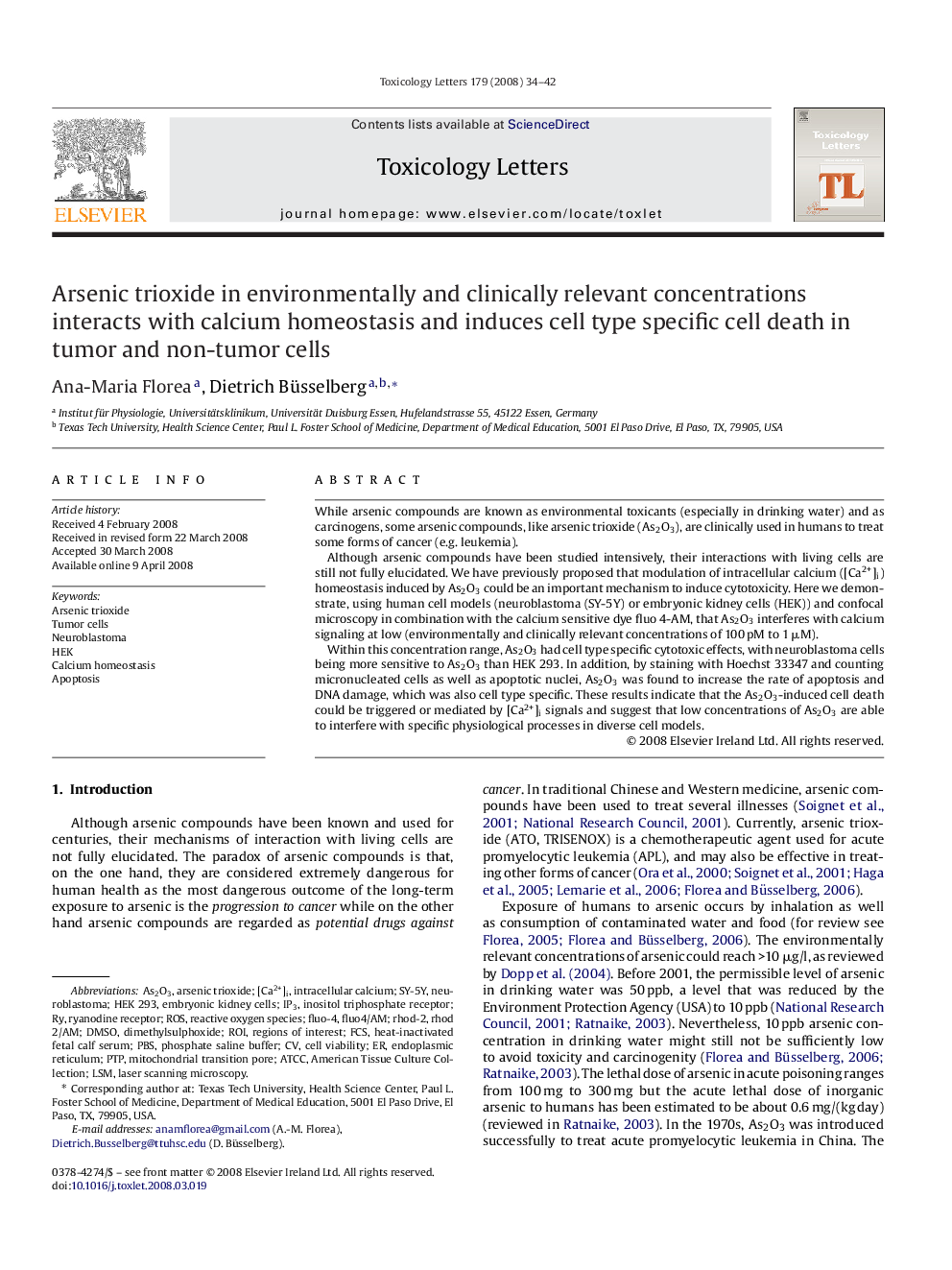| Article ID | Journal | Published Year | Pages | File Type |
|---|---|---|---|---|
| 2601801 | Toxicology Letters | 2008 | 9 Pages |
While arsenic compounds are known as environmental toxicants (especially in drinking water) and as carcinogens, some arsenic compounds, like arsenic trioxide (As2O3), are clinically used in humans to treat some forms of cancer (e.g. leukemia).Although arsenic compounds have been studied intensively, their interactions with living cells are still not fully elucidated. We have previously proposed that modulation of intracellular calcium ([Ca2+]i) homeostasis induced by As2O3 could be an important mechanism to induce cytotoxicity. Here we demonstrate, using human cell models (neuroblastoma (SY-5Y) or embryonic kidney cells (HEK)) and confocal microscopy in combination with the calcium sensitive dye fluo 4-AM, that As2O3 interferes with calcium signaling at low (environmentally and clinically relevant concentrations of 100 pM to 1 μM).Within this concentration range, As2O3 had cell type specific cytotoxic effects, with neuroblastoma cells being more sensitive to As2O3 than HEK 293. In addition, by staining with Hoechst 33347 and counting micronucleated cells as well as apoptotic nuclei, As2O3 was found to increase the rate of apoptosis and DNA damage, which was also cell type specific. These results indicate that the As2O3-induced cell death could be triggered or mediated by [Ca2+]i signals and suggest that low concentrations of As2O3 are able to interfere with specific physiological processes in diverse cell models.
